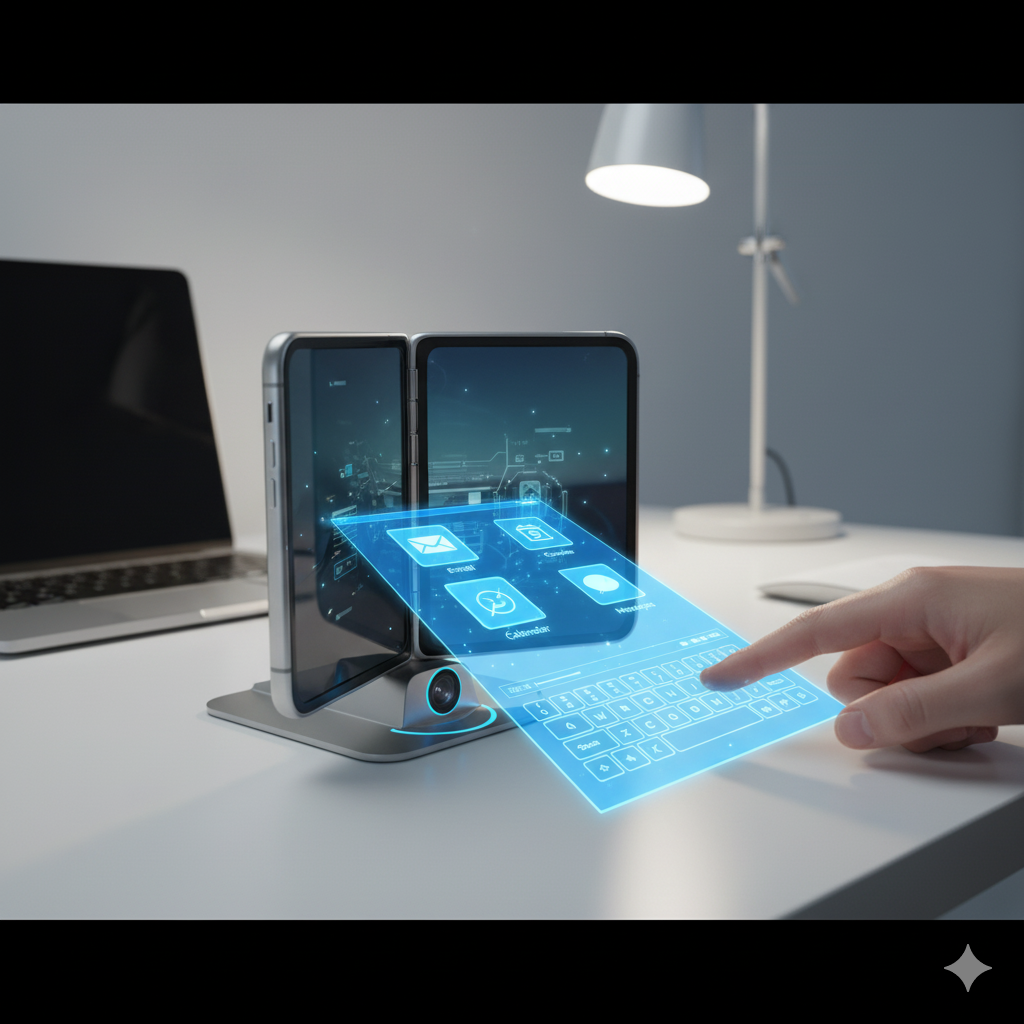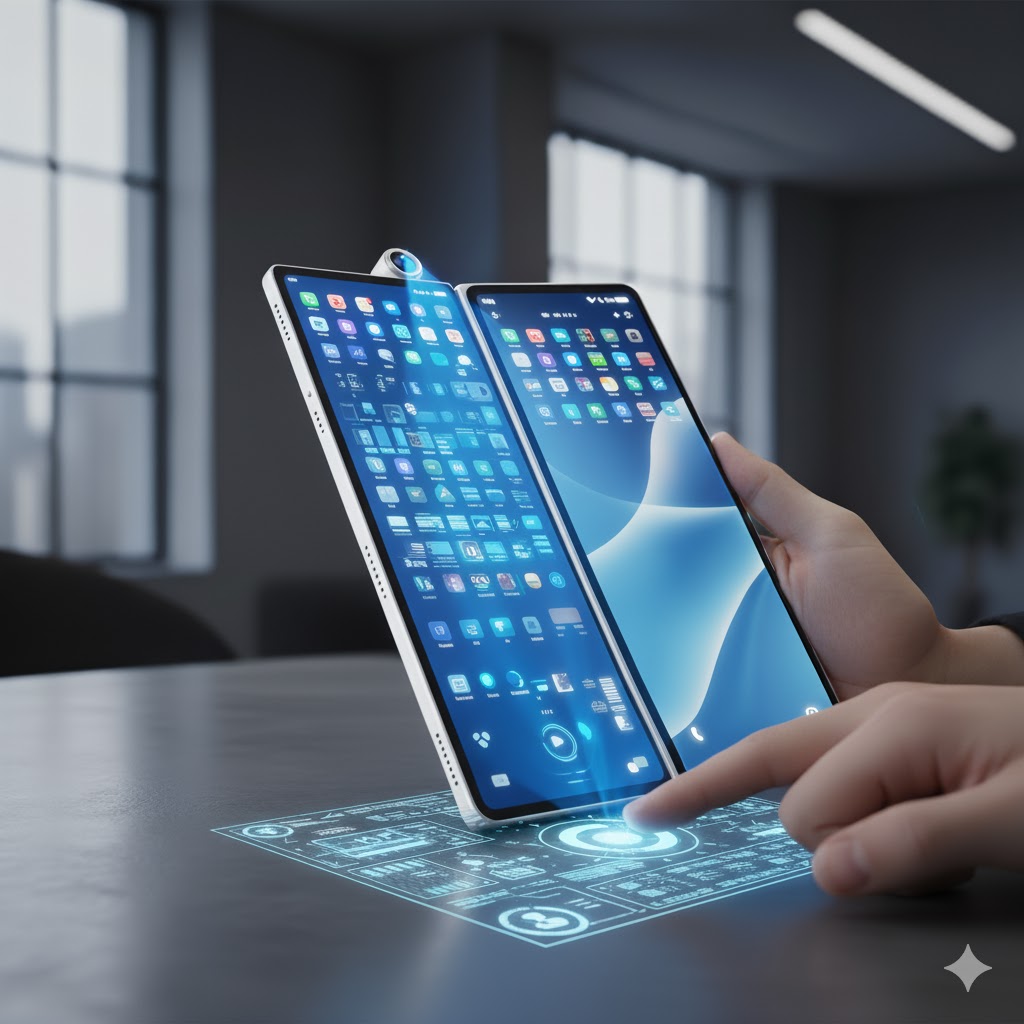I used Google Gemini to design the next iPhone. Here are the hilarious results
Description
AI is everywhere. Whether we’re talking about Apple Intelligence, Genmoji, Siri, Gemini, or ChatGPT, it’s hard to avoid the sudden infusion of bots on our iPhones, Macs, and just about every other device we use.
And it’s not about to stop anytime soon. Apple Intelligence is set to have a huge year in 2026, with the new and improved Siri finally getting its moment in the spotlight. In fact, Apple is rumored to be partnering with Google as the foundation for the new Siri, with a custom large language model with a reported 1.2 trillion parameters. That’s a lot of Gemini.
With that in mind, I recently turned to Google’s chatbot to see what it knows about the iPhone, specifically the upcoming foldable iPhone. While the results were impressive and fantastical, it’s a far cry from anything Apple will release next year. But it gives a good glimpse into what Gemini can do and how it thinks. Let’s dive in.
The Gemini iPhone: Features and specifications
Before I cover the prompts I used to design a foldable iPhone, it’s important to point out that the process is usually much more elaborate. Designers hold focus groups, make “mood boards” to capture colors, text, and formatting ideas, and then develop detailed design specs. It’s not an easy process and can often take weeks or even months. I remember visiting Frog Design — the design lab famous for working with Apple in the early days — and talking about the highly technical process they use to determine user intent.
I mention all of that because Google Gemini seems blissfully unaware of what it actually takes to design a product. The bot was happy to take my basic design concepts and dive right into creating an AI-generated mock-up. That said, Gemini is helpful for quick images to help you see what the final product might look like.
I started by listing a few basic specs and asked Gemini to include a holographic display that emits from a tiny projector.
Here are the prompts I used:
Design a foldable iPhone
Make it thinner than the iPhone Air
Use two displays that fold — about eight inches diagonally
Project a holographic display onto a table
Using a tiny projector lens
Of course, you can elaborate even further and write an entire page of instructions. Next, I asked Gemini to take my feature list and flesh it out more. I was impressed with the level of detail and excited to see my first design mock-up. Here’s part of the specs:
<figure class="wp-block-table">
| Feature | Specification | Rationale |
| Holographic Projector | Micro-LED or DLP Projector with a tiny, integrated lens. | The core innovation, allowing for shared, interactive, and spatial computing experiences. |
| Projected Display | Projects a holographic image onto a flat surface (e.g., a table). | Allows users to interact with a 3D or 2D interface (e.g., a full-size virtual keyboard, shared game board, or large-scale document) beyond the physical screen size. |
| Camera (Internal) | Under-Display Camera (UDC), likely 24MP resolution. | Eliminates the notch/hole-punch for a truly seamless main screen experience. |
| Biometric Security | Touch ID integrated into the power button. | A reliable and space-efficient solution compared to implementing Face ID on a foldable screen. |
The Gemini iPhone: First design mock-ups
Gemini had listed the design specs and even named the device the Helios, which has a nice ring to it, though I prefer iPhone Fold myself. I then asked Gemini to show me the initial design mock-up. The first design iteration was not quite right, though — which is par for the course with modern chatbots. The design was far too thick, the projection didn’t look remotely possible, and in many ways, the device didn’t even look like an iPhone at all. And it didn’t actually fold.
 <button class="lightbox-trigger" type="button">
<button class="lightbox-trigger" type="button"><svg fill="none" height="12" viewBox="0 0 12 12" width="12" xmlns="http://www.w3.org/2000/svg">
<path d="M2 0a2 2 0 0 0-2 2v2h1.5V2a.5.5 0 0 1 .5-.5h2V0H2Zm2 10.5H2a.5.5 0 0 1-.5-.5V8H0v2a2 2 0 0 0 2 2h2v-1.5ZM8 12v-1.5h2a.5.5 0 0 0 .5-.5V8H12v2a2 2 0 0 1-2 2H8Zm2-12a2 2 0 0 1 2 2v2h-1.5V2a.5.5 0 0 0-.5-.5H8V0h2Z" fill="#fff"></path>
</svg>
</button><figcaption class="wp-element-caption">
Google Gemini made some educated guesses about the next iPhone at first.
</figcaption></figure>Google Gemini/Foundry
Yet, I only had to type in a few more prompts to adjust the mock-up. For example, I asked Gemini to make the phone thinner than the current iPhone Air, and that worked wonders. I also had to tell Gemini to make the projector lens much smaller. Chatbots respond to specific commands. “Make the design thinner” doesn’t work as well as “make the design thinner than the iPhone Air” because there’s a reference point. The next design looked better:
 <button class="lightbox-trigger" type="button">
<button class="lightbox-trigger" type="button"><svg fill="none" height="12" viewBox="0 0 12 12" width="12" xmlns="http://www.w3.org/2000/svg">
<path d="M2 0a2 2 0 0 0-2 2v2h1.5V2a.5.5 0 0 1 .5-.5h2V0H2Zm2 10.5H2a.5.5 0 0 1-.5-.5V8H0v2a2 2 0 0 0 2 2h2v-1.5ZM8 12v-1.5h2a.5.5 0 0 0 .5-.5V8H12v2a2 2 0 0 1-2 2H8Zm2-12a2 2 0 0 1 2 2v2h-1.5V2a.5.5 0 0 0-.5-.5H8V0h2Z" fill="#fff"></path>
</svg>
</button><figcaption class="wp-element-caption">
Google Gemini made a valiant second attempt at this design, showing a foldable phone.
</figcaption></figure>Google Gemini/Foundry
I wasn’t quite ready to accept the mock-up, so I asked Gemini to start over with a new design, taking all of my previous comments into consideration. Lo and behold, Gemini created a mock-up that was quite impressive. It “felt” much more like an Apple product as well. I finally could live with the basic design for the holographic display, even if it wasn’t perfect.
 <button class="lightbox-trigger" type="button">
<button class="lightbox-trigger" type="button"><svg fill="none" height="12" viewBox="0 0 12 12" width="12" xmlns="http://www.w3.org/2000/svg">
<path d="M2 0a2 2 0 0 0-2 2v2h1.5V2a.5.5 0 0 1 .5-.5h2V0H2Zm2 10.5H2a.5.5 0 0 1-.5-.5V8H0v2a2 2 0 0 0 2 2h2v-1.5ZM8 12v-1.5h2a.5.5 0 0 0 .5-.5V8H12v2a2 2 0 0 1-2 2H8Zm2-12a2 2 0 0 1 2 2v2h-1.5V2a.5.5 0 0 0-.5-.5H8V0h2Z" fill="#fff"></path>
</svg>
</button><figcaption class="wp-element-caption">
The iPhone Fold design by Google Gemini, a third attempt.
</figcaption></figure>Google Gemini/Foundry
The Gemini iPhone: Tweaking the design and the mock-ups
Once you have a design you like, it’s possible to then make minor adjustments — as long as you are specific about the prompts. For example, I asked Gemini to make the design “just a hair thinner” and that worked because Gemini understood my intent.
It was also easy to change the color. I used this prompt: “Don’t change anything about the design except the color of the phone. Make it all white not black or silver.” Amazingly, that worked instantly and I felt like the design was starting to take shape. I decided to have some fun with my design and asked Gemini to put the phone in a coffeeshop instead so I could envision what it would look like in a familiar setting. I asked Gemini to put people in the background as well.
Here’s what that mock-up looked like:
 <button class="lightbox-trigger" type="button">
<button class="lightbox-trigger" type="button"><svg fill="none" height="12" viewBox="0 0 12 12" width="12" xmlns="http://www.w3.org/2000/svg">
<path d="M2 0a2 2 0 0 0-2 2v2h1.5V2a.5.5 0 0 1 .5-.5h2V0H2Zm2 10.5H2a.5.5 0 0 1-.5-.5V8H0v2a2 2 0 0 0 2 2h2v-1.5ZM8 12v-1.5h2a.5.5 0 0 0 .5-.5V8H12v2a2 2 0 0 1-2 2H8Zm2-12a2 2 0 0 1 2 2v2h-1.5V2a.5.5 0 0 0-.5-.5H8V0h2Z" fill="#fff"></





